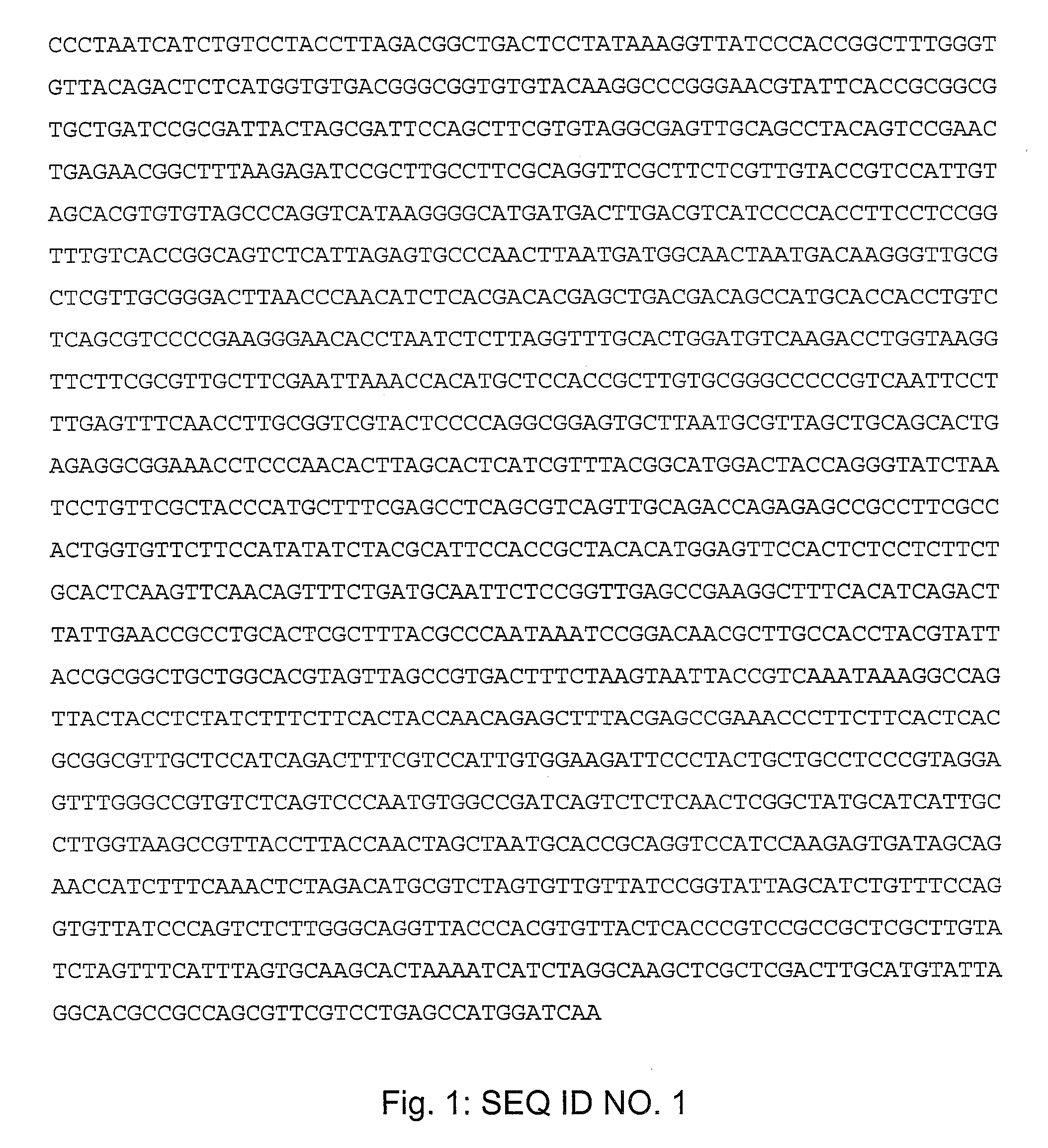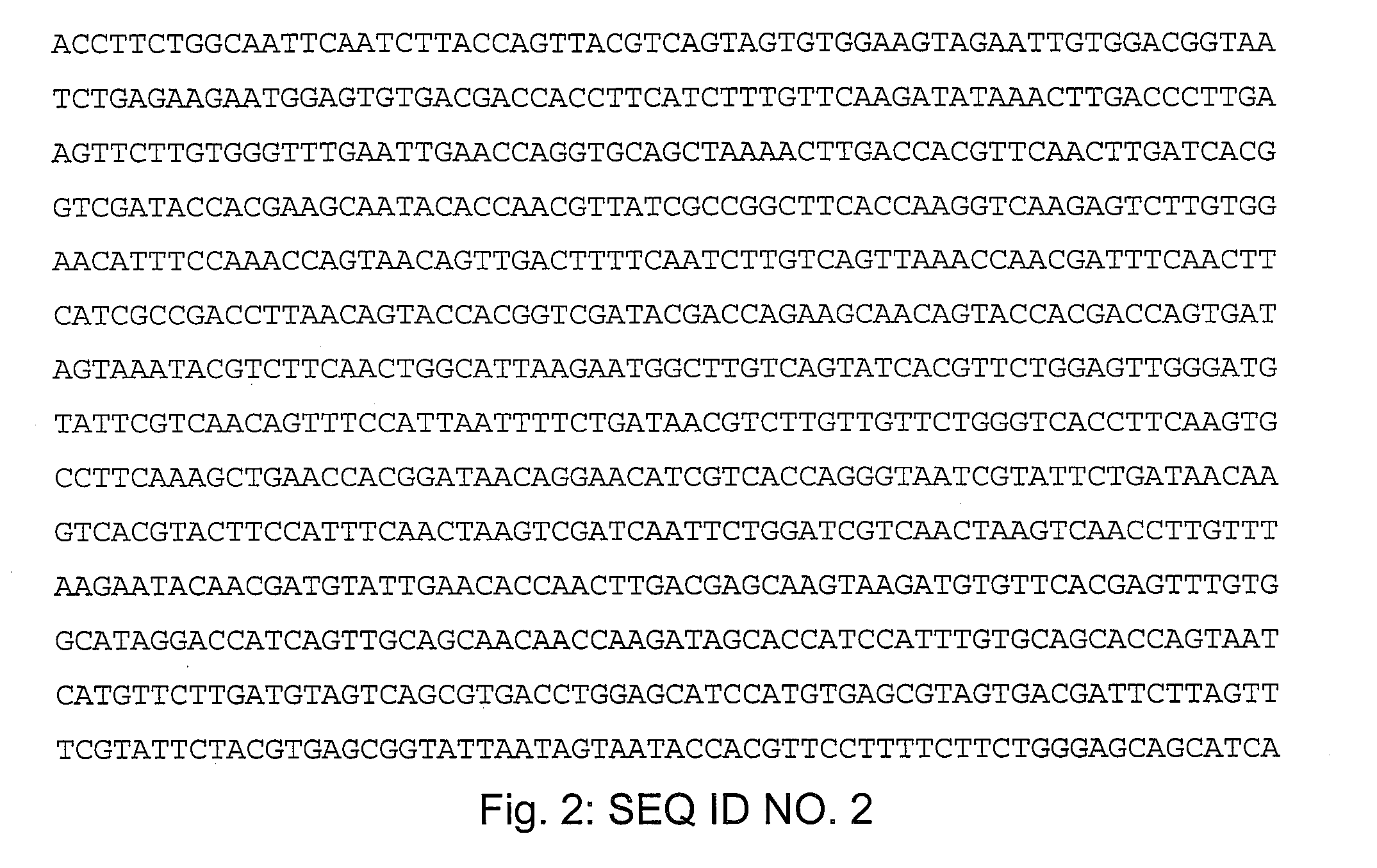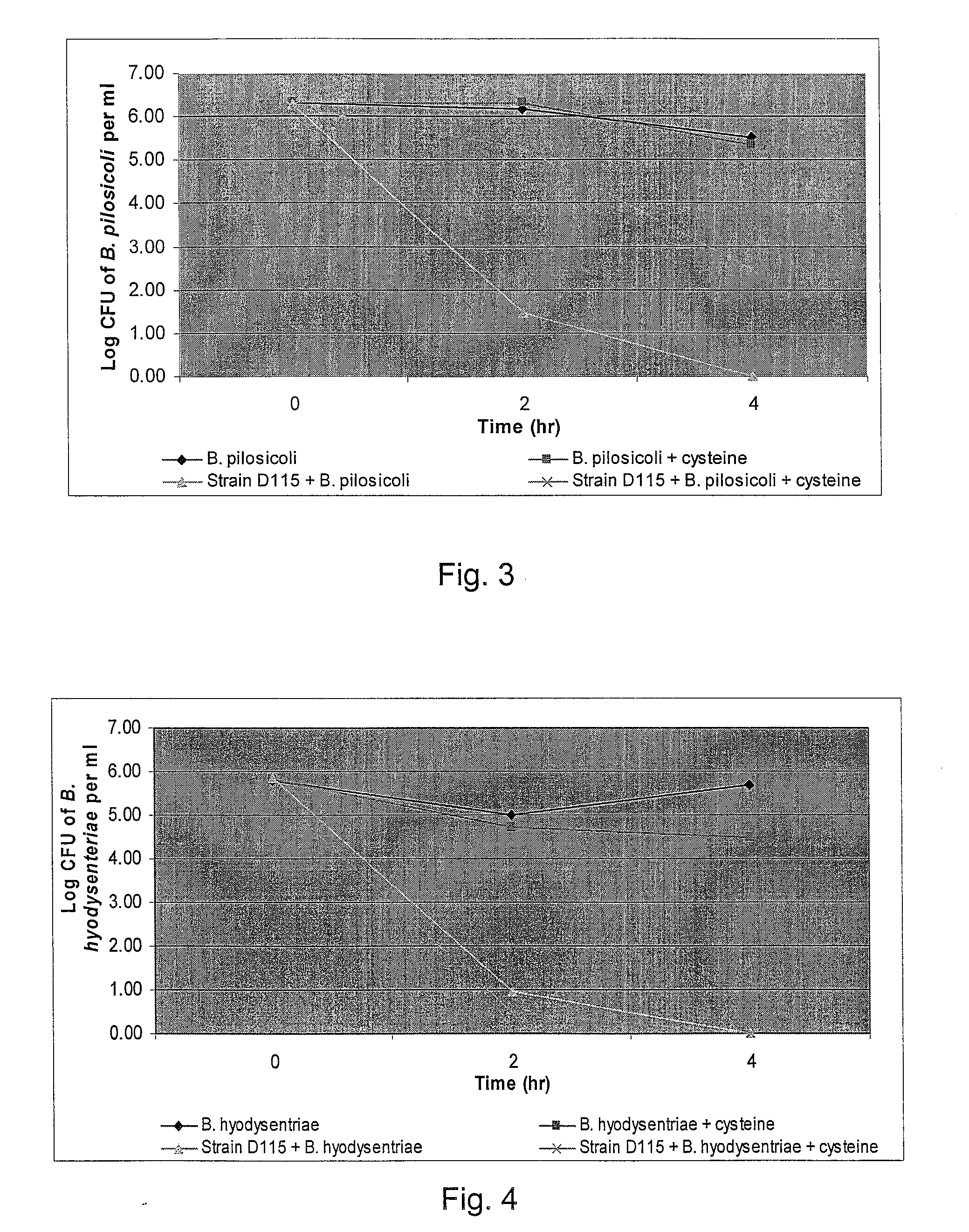Broad-Spectrum Antibacterial and Antifungal Activity of Lactobacillus Johnsonii D115
- Summary
- Abstract
- Description
- Claims
- Application Information
AI Technical Summary
Problems solved by technology
Method used
Image
Examples
example 1
Materials and Methods
[0039]Culture conditions of lactic acid bacteria (LAB) strain D115. Lactic acid bacteria strain D115 was grown in deMan Rogosa Sharpe broth (MRS, pH 6.3) (Becton Dickinson and Company, USA) at 37° C. under anaerobic condition for 24 h. Overnight culture was streaked onto MRS agar and the arising pure colonies were sub-cultured in MRS broth using the same conditions as described. Cultures were kept in 20% glycerol at −80° C. for long-term storage.
[0040]Culture conditions of Brachyspira spp. Brachyspira hyodysenteriae ATCC 27164 and B. pilosicoli ATCC 51139 were grown in Brain Heart Infusion broth (Oxoid Ltd, Basingstoke, Hampshire, England) supplemented with 10% fetal calf serum (HyClone Laboratories Inc, USA), 0.05% L-cysteine (Sigma Chemical Co., Steinheim, Germany) and 0.2% glucose (Merck, Darmstadt, Germany), and incubated at 37° C. under strict anaerobic condition for 4-6 days. Cultures were kept in 40% glycerol for long term storage at −80° C.
[0041]Bacteria...
example 2
Material and Methods
[0070]Culture conditions of lactic acid bacteria (LAB) strain D115. Lactic acid bacteria strain D115 was grown in deMan Rogosa Sharpe broth (MRS, pH 6.3) (Becton Dickinson and Company, USA) at 37° C. under anaerobic condition for 24 h. Overnight culture was streaked onto MRS agar and the arising pure colonies were sub-cultured in MRS broth using the same conditions as described. Cultures were kept in 20% glycerol at −80° C. for long-term storage.
[0071]Culture conditions of indicator organisms. Campylobacter jejuni (ATCC 35918), Escherichia coli (ATCC 25922), Klebsiella pneumoniae (clinical isolate, National University Hospital, Singapore), Listeria monocytogenes (ATCC 7644), Shigella sonnei (clinical isolate, National University Hospital, Singapore), Vibrio cholera (clinical isolate, National University Hospital, Singapore), Vibrio parahaemolyticus (clinical isolate, National University Hospital, Singapore), Streptococcus pneumoniae (clinical isolate, National Un...
PUM
 Login to View More
Login to View More Abstract
Description
Claims
Application Information
 Login to View More
Login to View More - R&D
- Intellectual Property
- Life Sciences
- Materials
- Tech Scout
- Unparalleled Data Quality
- Higher Quality Content
- 60% Fewer Hallucinations
Browse by: Latest US Patents, China's latest patents, Technical Efficacy Thesaurus, Application Domain, Technology Topic, Popular Technical Reports.
© 2025 PatSnap. All rights reserved.Legal|Privacy policy|Modern Slavery Act Transparency Statement|Sitemap|About US| Contact US: help@patsnap.com



